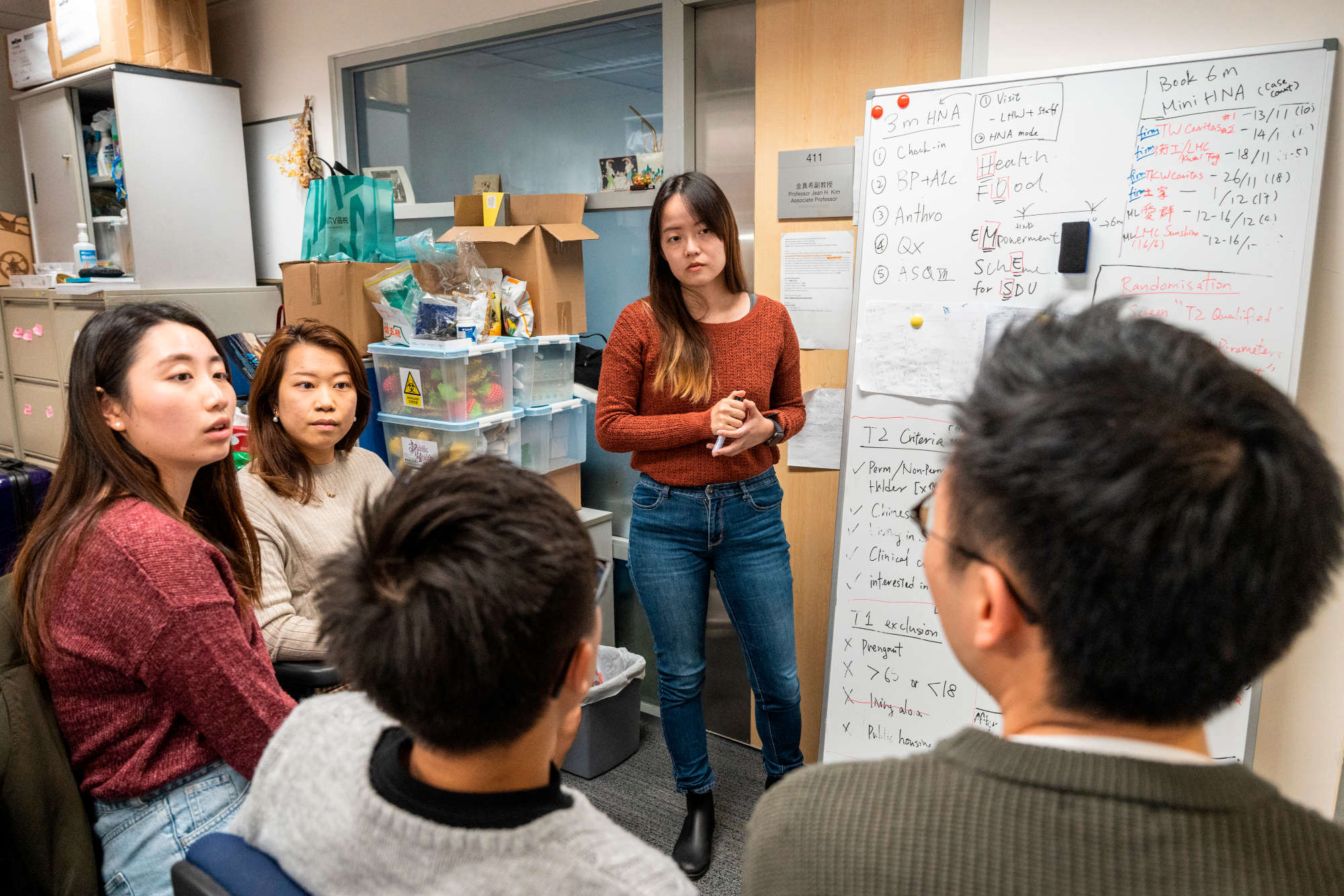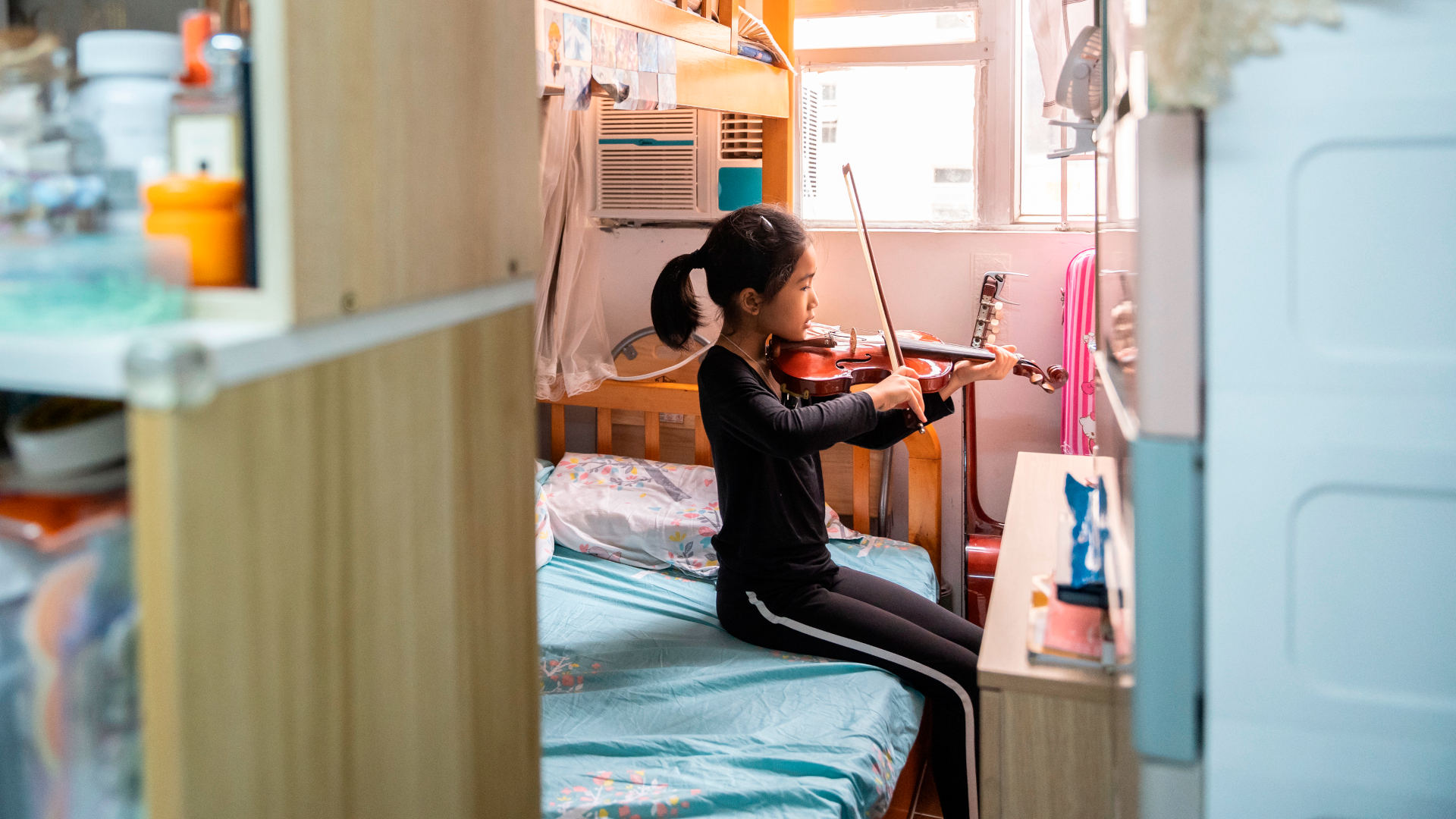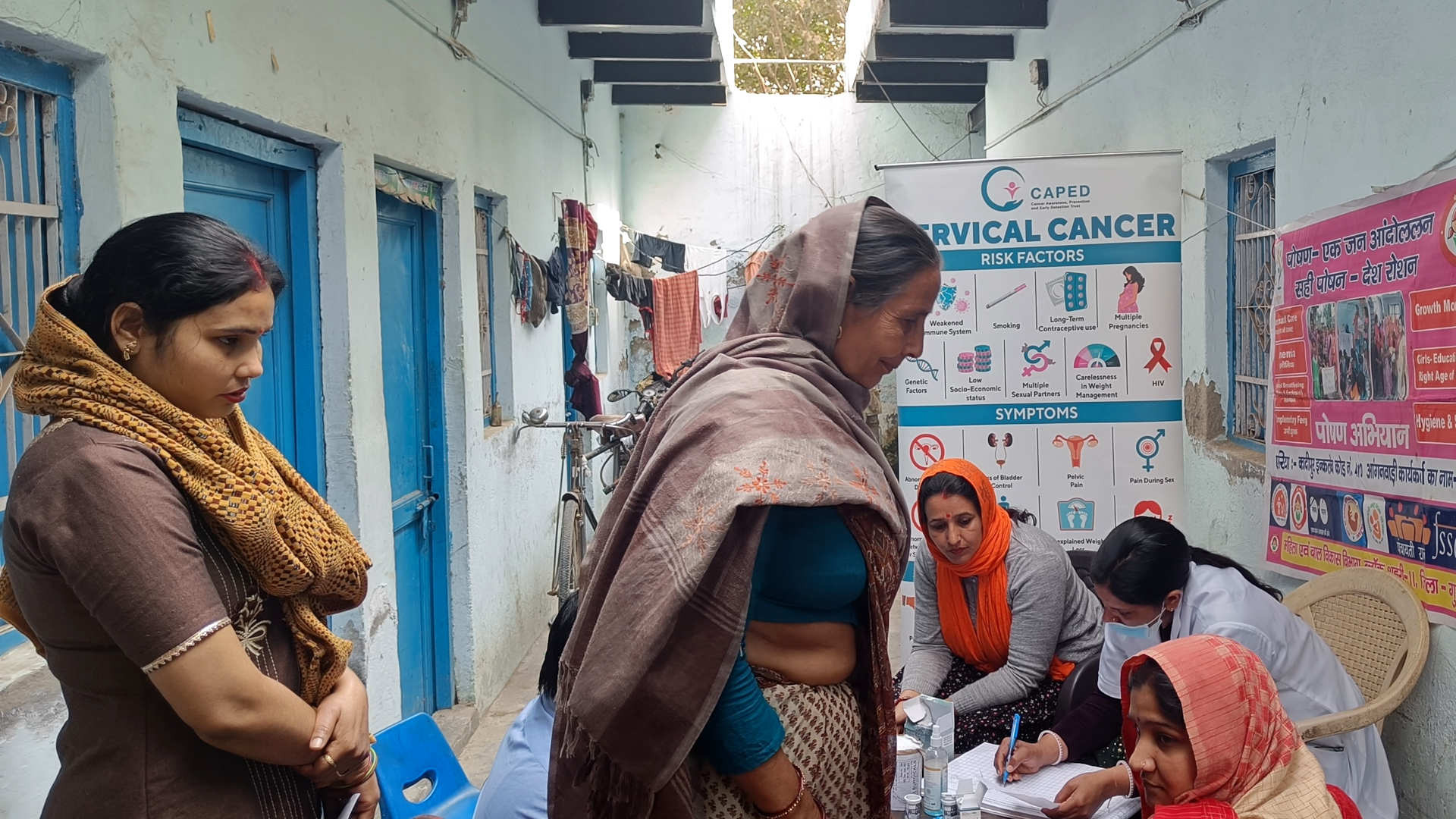In Hong Kong’s Shoebox Flats, an Opportunity for Targeted Care
Sham Shui Po is only a 15-minute subway ride from Hong Kong’s Central District, yet it’s one of the city’s poorest and most densely populated areas. The neighborhood, marked by its tightly packed aged apartment buildings, bustling street markets, and discount stores, is home to tens of thousands of low-income families unable to get subsidized housing.
Many of those residents live in so-called shoebox flats — subdivided apartments that have sprung up in response to a widespread housing shortage. What was once a single standard-sized unit gets divvied up into two or three or even four or more to accommodate multiple families. These informal dwellings tend to be squalid, poorly ventilated, lacking basic facilities, and — with a median floor area of just 100 square feet — very small.
As the pandemic laid bare the disparities faced by poverty-stricken families, Crystal Ying Chan, a research assistant professor at Chinese University of Hong Kong, was interested in how those disparities manifested in people’s diet and nutrition. With rent taking up as much as 40 percent of their monthly income, many households struggle to put food — healthy or otherwise — on the table.
So, in the spring of 2020, which marked the city’s second wave of Covid-19 outbreaks, Chan collaborated with a mobile team of nurses, social workers, and dieticians to deliver food and provide care services to subdivided flat residents. She then secured a research grant to explore factors contributing to food insecurity risks among those low-income families.
“It began as a small three-month study to look at how Covid heightened food insecurity in these communities,” said Chan, “but we quickly realized that it goes beyond the pandemic.”
Now, Chan is exploring how to use lay health workers — members of the community who have been trained in providing health services — to address gaps in public care, from food insecurity to diabetes management to mental health care.
An emerging body of research has explored similar interventions for community health services globally. In Uganda, for instance, care delivered by community health workers has helped manage infectious diseases such as malaria, tuberculosis, and HIV, and one ongoing study is exploring its effectiveness to control hypertension among the country’s rural communities.
These informal dwellings tend to be squalid, poorly ventilated, lacking basic facilities, and — with a median floor area of just 100 square feet — very small.
The need for health care workers is especially pressing in Hong Kong, which has seen a continued brain drain across its health care and social services sectors in the wake of the national security law imposed by Beijing in June 2020, which limited rights to free speech and protest, and has been called “draconian” by the nonprofit Human Rights Watch.
Facing an uncertain political climate, many health care professionals have left the city in what some have called a mass exodus. Meanwhile, the government has attempted to recruit overseas talent via new visa schemes and attractive pay packages.
A community intervention model, such as the one Chan is studying, could offer low-income families a way to access necessary services without having to rely on an understaffed health care sector, or foreign workers who may face language and cultural barriers. Such a model, Chan said, recognizes the value of “lived experience at the grassroots level” and targets treatment so workers can offer advice “with the families’ specific circumstances in mind.”
Researchers have long explored how a child’s physical environment influences their development. Stressors such as noise and crowding can have pronounced physiological effects. In Hong Kong, crowded substandard living conditions have been shown to affect eyesight, developmental issues, and more. According to one NGO worker, many children living in subdivided flats have spinal problems from studying in bed due to the limited floor space.
During the pandemic, home confinement measures paradoxically exposed many residents to elevated infection risks associated with crowding, poor ventilation, shared facilities, and faulty bathroom pipes; in the summer of 2020, Hong Kong’s largest cluster outbreaks were in densely populated low-income districts such as Sham Shui Po.
But small living spaces can also have an indirect impact on health by limiting access to balanced meals. For example, a family might not have a large enough fridge to store fresh vegetables and meat. Or their apartment might only have a single-burner stove top, further limiting their meal options. “It has to do with the many physical and socioeconomic constraints within the household,” said Chan.
“It began as a small three-month study to look at how Covid heightened food insecurity in these communities, but we quickly realized that it goes beyond the pandemic.”
In 2021, Morning Wan, 38, settled into a subdivided flat with her now 8-year-old daughter. The apartment, which is located in Sham Shui Po right next to the district’s famed electronics flea market, has a single-stove kitchen installed in a tiny, windowless bathroom. The unit also lacks a functional vent, and Wan said she doesn’t like to cook full meals regularly, in part for that reason. Once, she cooked beef short ribs — a dish her daughter liked at the time — “and the smell lingered for days. Fish was even worse,” recalled Wan.
In one recent study, which is not yet published and is undergoing review, Chan surveyed 469 families living in subdivided flats similar to Wan’s. Her team found that children growing up in such units were more likely to experience food insecurity and nutrient deficiencies: 25 percent of children between the ages of 6 to 8 were overweight or obese, nearly double the city-wide average of 13 percent. Meanwhile, close to one in four children, from infants up to age 17, were underweight, versus the city-wide average of one in a hundred. Worse still, children in half of the households had experienced food insecurity in the past year.
“Essentially, how well they cope with these constraints depends on the caregivers’ knowledge and the ownership of their food decisions,” said Chan.
While Wan and her daughter did not participate in Chan’s research, she reported that their lack of proper kitchen facilities affected her family’s diet. After a health screening found her daughter to be underweight, she participated in a community nutrition program run by a local charity, People Service Center, which aims to empower caregivers from low-income households with nutrition knowledge through group activities that are similar to some of the features in Chan’s program, such as cooking classes led by dieticians. There, Wan was given information on affordable plant-based alternatives that can make up for what is lacking in her daughter’s diet.
But with the home environment remaining unchanged, there is little she can add to their minimal daily meals. “Sometimes my daughter gets hungry later in the evening, say 9 or 10 p.m., when I wouldn’t want to cook as I don’t wish to disturb our next-door neighbors,” said Wan, noting the flimsy partition walls that have little acoustic insulation. “I would just fetch her a glass of milk and some biscuits.”

The question of how effective certain health interventions for children can be may lie in the dynamics between the children and their caregivers. “It is important not just to equip the mothers with the know-how, but also to help them build confidence and find ways to better communicate with their young children, in this case through the preparation and sharing of food,” said Gigi Lam, a social worker at the People Service Center, who is not involved in Chan’s program, explaining why she and colleagues also regularly host parent-child parallel group intervention alongside the cooking classes.
Another challenge facing low-income families is how to translate the nutritional advice they have received into the households’ daily meal plans and then keep at it. “You can share all the dietary information you want, but at the end of the day, a mother won’t be able to change her diet and cook healthy meals if she cannot get her husband and children on board,” said Chan.
Her ongoing work on examining the role of lay health workers in addressing the interconnecting issues of poverty, health disparity, and mental well-being is built upon a proposal to specifically look at how a community intervention model could help with prediabetes management.
Diabetes has been found to be linked to poverty levels globally. In the U.S., for instance, diabetes affects low-income adult populations disproportionately, and income-related inequalities in diabetes are also revealed to have widened over the past decade. Chan’s research echoed those correlations; her team found that one in eight adult caregivers surveyed by her team were prediabetic or diabetic, and 85 percent of these cases had previously been underdiagnosed.
“Without early intervention, patients with prediabetes would have an increased risk of developing type 2 diabetes in 10 years, and we already know that it means a higher likelihood of developing other chronic diseases,” said Chan. “The key is to double down on our work in preventive care when the primary care workers are already stretched thin.”
Chan sees her program as a potential solution to addressing the families’ day-to-day health challenges that otherwise cannot be realistically or promptly addressed by professional practitioners.
Through the community intervention model, regular people are recruited from the community and receive training from a multidisciplinary team of practitioners to provide targeted, individualized support as well as advice ranging from meal plans to information about neighborhood stores that offer the best deals. The lay workers then conduct regular follow-ups and, in some cases, flag advanced or previously overlooked needs that require subsidized medical or social welfare intervention.
A key strength of this model, said Miya L. Barnett, an associate professor of clinical psychology at the University of California, Santa Barbara, is that lay health workers “are really in tune with the needs of the community because they often are members of the community themselves.”
“During the worst outbreaks, many residents with chronic illnesses such as diabetes were left in a state of fear; they isolated themselves at home all day,” said Chan. “When they did need to seek medical help, they were either stuck in long queues at out-patient clinics that could last three days or turned down by the ER.” Lay health workers could potentially fill that gap, stepping in to provide ad-hoc support or fetch over-the-counter medications.
A key strength of this model is that lay health workers “are really in tune with the needs of the community because they often are members of the community themselves.”
“We’ve now got eight caregivers who managed to reduce the doses or even get off their diabetes medication during the program,” said Chan, who also acknowledges the small sample size. “But it gives us an early indication of how lay health workers could play a more effective role where ‘trained professionals’ like us can’t.”
A sustainable lay health worker model, as envisioned by Chan, should ultimately be able to create employment opportunities within the community. But currently, as her program is still in an early phase, her team’s lay health workers consisted of university students and retired professionals from a relatively better-off background than their beneficiaries.
There is also a practical need for a formalized, paid commitment that establishes a contract of trust, ensuring the lay workers’ compliance with their stated duties and ethical codes. “Considering the amount of responsibility and confidential information involved, lay health workers cannot function as volunteers. The beneficiaries’ interests should be the priority,” said Henry Sin, an experienced social worker from Chan’s team.
Barnett, citing the context of child welfare in the U.S., concurred: “The thing that I always emphasize the most is that if we’re working with lay health workers, it’s important that they get really good training and ongoing supervision.”
A major challenge, therefore, rests on integrating investments in public health care with community-based social service networks. “They need to be trained by a multidisciplinary team like ours, and whoever is in charge of the program would also need to manage these workers and their cases,” said Sin. “So many NGOs would be reluctant to adopt the model without additional resources invested in the social service sector.”
Support Undark Magazine
Undark is a non-profit, editorially independent magazine covering the complicated and often fractious intersection of science and society. If you would like to help support our journalism, please consider making a donation. All proceeds go directly to Undark’s editorial fund.
Other institutional barriers persist. “Unlike some of the developing countries where lay health worker models are meant to address the gaps within the public health system, we don’t have the technological solutions, like an app, to collect data or quickly run screenings and identify cases requiring referral,” said Chan, citing examples of mobile health technology platforms for malaria testing and monitoring.
“And here, only doctors are allowed to diagnose and prescribe medications,” Chan added. What Hong Kong should explore, she believes, is a more decentralized model in which nurses and dieticians are given more power to provide basic care plans for conditions, such as prediabetes and hypertension, that can be effectively managed at the household level.
And such barriers are by no means unique to Hong Kong. “Lay health workers can only be as effective as they’re allowed to be,” said Barnett. “And that requires the whole system of care to respect the work that they’re doing, and understand the boundaries of the work of what they’re doing, versus other professionals working with the system.”
The looming impact of Hong Kong’s ongoing brain drain on health disparities remains a muted debate. In October 2022, a report from the Audit Commission revealed that the District Health Center in Kwai Tsing — another district with one of the city’s highest poverty rates — saw a staff turnover rate as high as 101 percent between 2021 and 2022.
Among the professions that have borne the brunt of the crackdown after the 2019 protests are social workers. In July of last year, in a move widely seen to stifle dissenting voices, the government enacted a bill amendment that disallowed residents who are convicted of “endangering national security” from registering as social workers.
Still, Chan remains hopeful that her ongoing research will help steer a way forward for Hong Kong’s community health care innovation that can better serve the many intricate needs of its children and their caregivers. One of the ideas she has is to co-design “shared living rooms” at her team’s partner organizations, where families would organize birthday parties and festive potlucks so that both the parents and their children can enjoy a reprieve from the tension-inducing living conditions and the taxing work that raising children in such environment requires.
With her project receiving funding for another three years to study the health needs of residents living in a more varied range of inadequate housing in Hong Kong, Chan is looking to expand her team’s research scope and capacity to better study a range of concerns related to substandard housing, from mental health to indoor pollution exposure.
Through the lay health worker model, Chan’s ultimate goal is to provide an opportunity for people who receive care to then become the caregivers of their neighborhood themselves, with a feeling of fulfilment that stems from improved wellbeing as well as the new-found camaraderie, she said.
“What community members need are peers who can walk in their shoes and with them side by side.”
Crystal Chow is a journalist and writer from Hong Kong.
This story was written with support from The Dart Center for Journalism and Trauma’s Early Childhood Global Reporting Fellowship.











